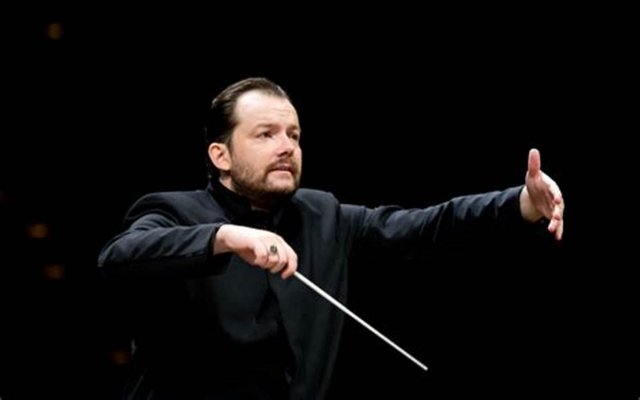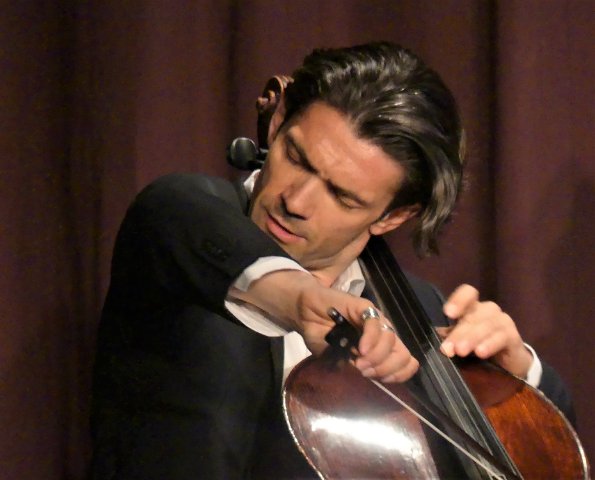Boston Symphony Charms at Carnegie Hall
Something Old, Something New and Something very Flashy
By: Susan Hall - Apr 27, 2023
RAVEL Alborada del gracioso
THIERRY ESCAICH Les Chants de l'aube, Concerto for Cello and Orchestra (NY Premiere)
RACHMANINOFF Symphony No. 2
A decade ago, Andris Nelsons was conducting Tchaikovsky at the Metropolitan Opera, when the Boston Symphony arrived in town and their conductor, James Levine, fell ill. Nelsons stepped in and the rest is history. Shostakovich is the Russian composer Nelsons has adopted as his own. Rachmaninoff, whose Second Symphony was on the program on Monday night, may not be as close a soulmate for the young Latvian conductor.
One concern of Nelsons before he accepted the Boston post was a chance to conduct new music. Paul Buttenweiser, New York born but now a Bostonian has championed new music in Boston for years. He could make a credible promise to Nelsons, for whom, as a sensitive psychiatrist, he would also be available day and night to make America’s most European city home. Butternweiser and his wife Catherine commissioned the Thierry Escaich Les Chants de l'aube, a concerto for cello, which had its New York premiere with Gautier Capuçon, Cello.
Les Chants de l'aube was the highlight of the evening, although some flash music from Maurice Ravel came in a close second. At only eight minutes long, Ravel’s Alborada sticks. Ravel orchestrated his piano work Miroirs, including the Alborada, which premiered in Paris. Ravel’s mother had sung Spanish tunes when he was young, and you can hear their flavor in the pizzicato violins and harps, imitating the strums of a guitar. They give a hint of Spanish flavor, imitating the sound of a strummed guitar. Solo winds and strings foreshadow the seguidilla – a spritely Spanish dance that frames the short work.
A bassoon solo, marked “expressive like a recitative” by the composer, begins the fool’s heartfelt but jumbled serenade, punctuated by rhythmic interjections from strings. The seguidilla erupts from time to time, and concludes the work. It is electrifying.
While the title “dawn” is also in Escaich’s work, it is bassoon’s role in the Ravel which is a prelude to the cello’s deliberately awkward position in Les Chants d’aube.
Composer Escaich performs regularly on the organ in Paris, as Messiaen did before him. Saint Saens was also an organist. Watching Escaich improvise on his instrument, you can detect his origins as an accordionist. You can also hear, as he improvises, the variety of tones, dynamics and colors that can be expanded from organ to orchestra. Yet it is the relationship of the soloist to the orchestra that seems to obsess the composer.
The work performed by Boston detailed the struggle to create melody and even to find a place and survive the soundscape of a larger universe. Masterful Gautier Capuçon on the cello, took listeners on this journey, which provides structure and melodies, sometimes in bits and pieces. The composer, joining everyone on stage at the concussion of the piece, seemed ecstatic about the work’s realization.
After the worldwide search, on the morning of the concert, Boston announced its choice for a new principal horn: Richard Sebring, one its own. Sebring was one of approximately 150 national and international applicants for the position, many of whom hold or have held positions in major orchestras throughout the country. He is a native of Concord, Mass. and his performance at Carnegie made clear the reason for his choice. Under Nelsons, the brass section of the orchestra has become one of the country’s finest. His solo in the Rachmaninoff Second Symphony was stunning.
The popularity of Rachaninoff’s compositions of the early twenty century has continued. Many members of the audience at Carnegie had come specifically to hear this symphony. It is a curious work of passive romanticism. Nelsons and the orchestra did not make much of it. What was missing were improvisatory moments which had been so exciting in the cello concerto. Thierry Escaich is a master of making a work present. Rachmaninoff does not help here. The dynamic of the melody based on the Dies Irae comes at the expense of tautness of structure. Yet the audience loved the performance as it welcomed the Boston Symphony to Carnegie in a packed hall.


